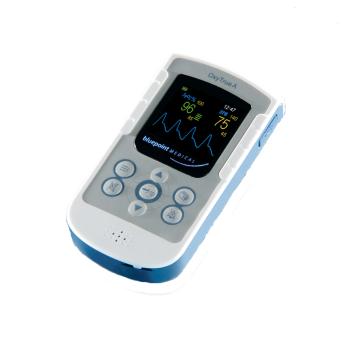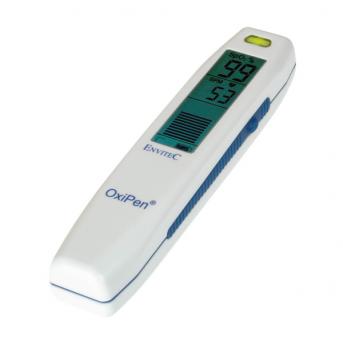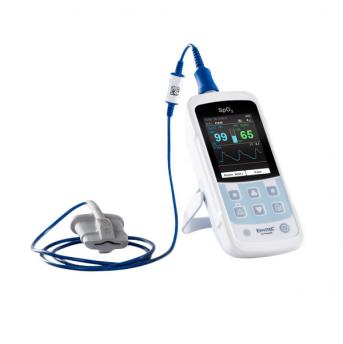MEDACX supplies a range of professional standard Pulse Oximeters which meet the European Medical Device directives and ISO standards for pulse oximetry. Plus with a full range of Sp02 sensors you can choose your Pulse Oximeter with one or several Sp02 sensors to suit your application needs. Sapphire Technology is the advanced pulse oximetry set which delivers the highest accuracy and reliablilty.
its technology you can trust
How does a Pulse Oximeter work?
Pulse oximetry is a simple non-invasive method of monitoring the percentage of haemoglobin (Hb) which is saturated with oxygen. The pulse Oximeter consists of a probe attached to the patient's finger or ear lobe which is linked to a computerised unit. The unit displays the percentage of Hb saturated with oxygen together with an audible signal for each pulse beat, a calculated heart rate and in some models, a graphical display of the blood flow past the probe. Audible alarms which can be programmed by the user are provided. An Oximeter detects hypoxia before the patient becomes clinically cyanosed.
We can directly measure the oxygen saturation in any blood sample. However, we usually continuously measure oxygen saturation using a device called a pulse Oximeter. This is a terrific advance, because a pulse Oximeter works without the need for a blood sample.
- In general, oxygen saturation in persons with no lung or heart problems is high 93-100%.
- When it falls much below 90%, it can be a sign that something is wrong with the lungs or heart, and that oxygen or other therapies are needed.
- However, the ideal oxygen saturation is not the same for every person.
Q. What is oxygen saturation?
How is it measured, and when do doctors become concerned when measuring it?
Most of the oxygen in our bloodstream is transported by haemoglobin, the red-coloured protein in our red blood cells. Haemoglobin does the work of picking up oxygen from the lungs and delivering it to the rest of the body. Oxygen saturation tells us how much oxygen is bound to haemoglobin: when blood leaves the lungs it should be well-saturated with oxygen to deliver to the body.
Technically how does it measure?
A source of light originates from the probe at two wavelengths (650nm and 805nm). The light is partly absorbed by haemoglobin, by amounts which differ depending on whether it is saturated or de-saturated with oxygen. By calculating the absorption at the two wavelengths the processor can compute the proportion of haemoglobin which is oxygenated. The Oximeter is dependant on a pulsatile flow and produces a graph of the quality of flow. Where flow is sluggish (eg hypovolaemia or vasoconstriction) the pulse Oximeter may be unable to function. The computer within the Oximeter is capable of distinguishing pulsatile flow from other more static signals (such as tissue or venous signals) to display only the arterial flow.




